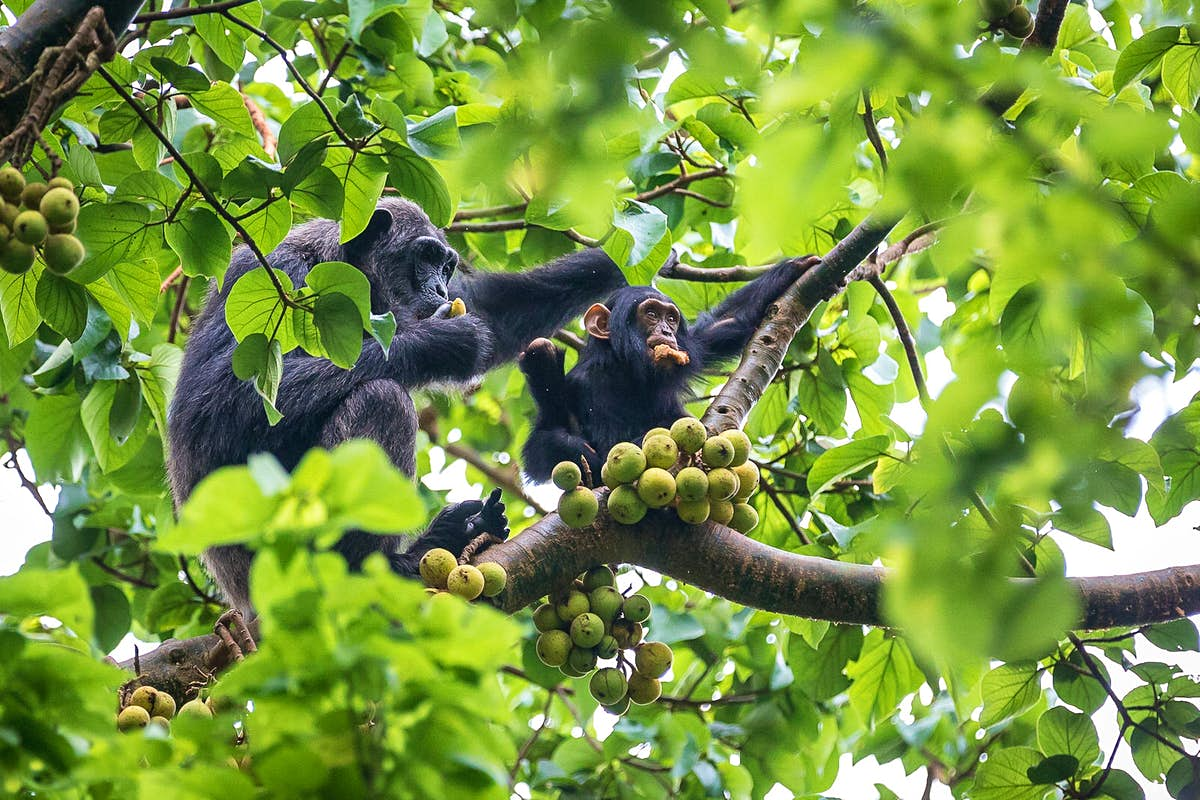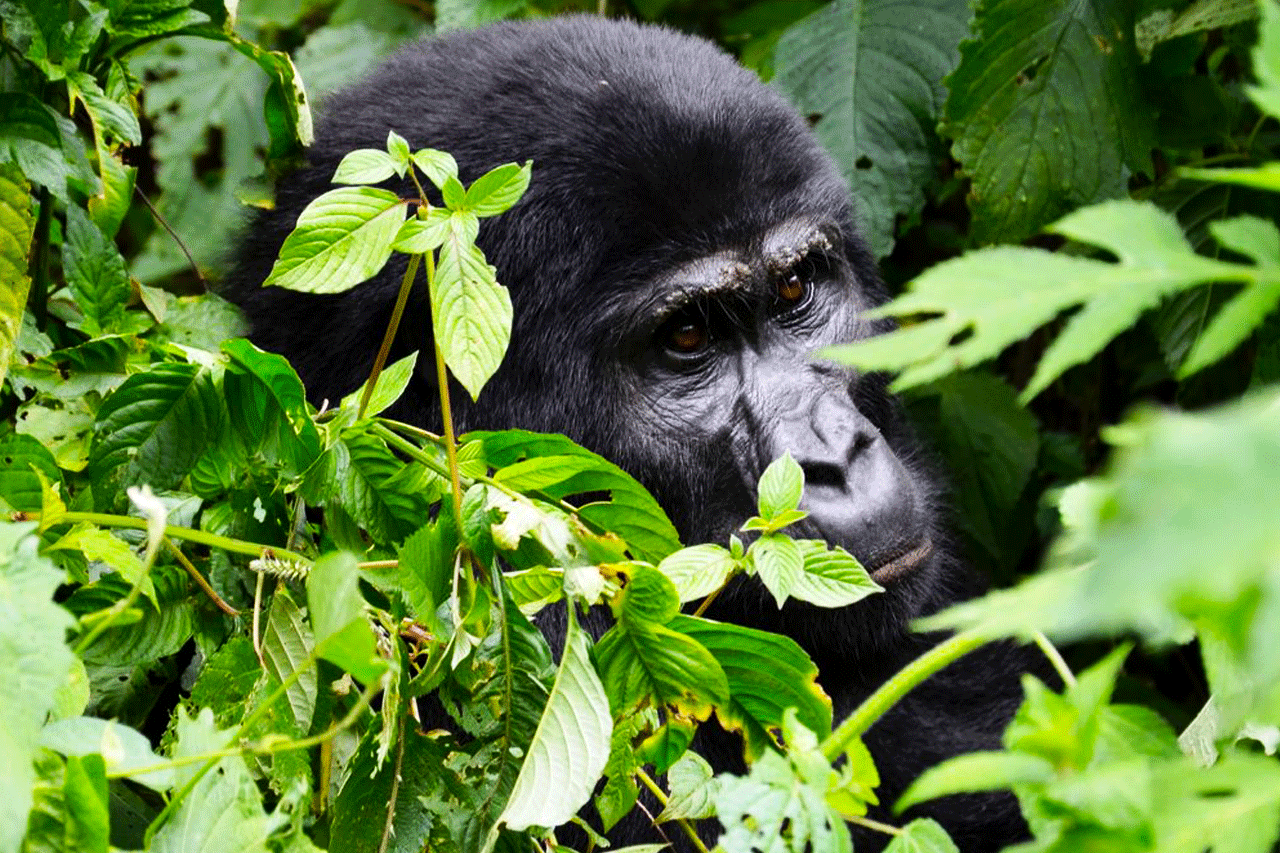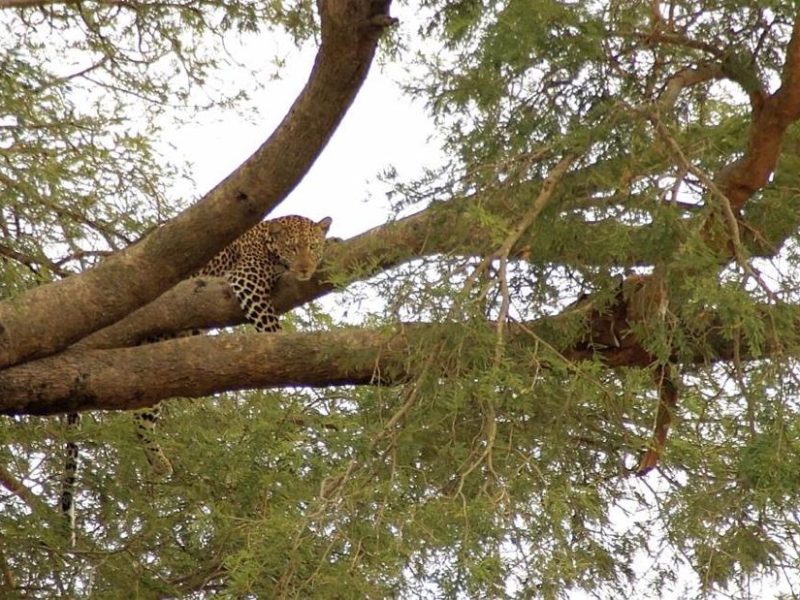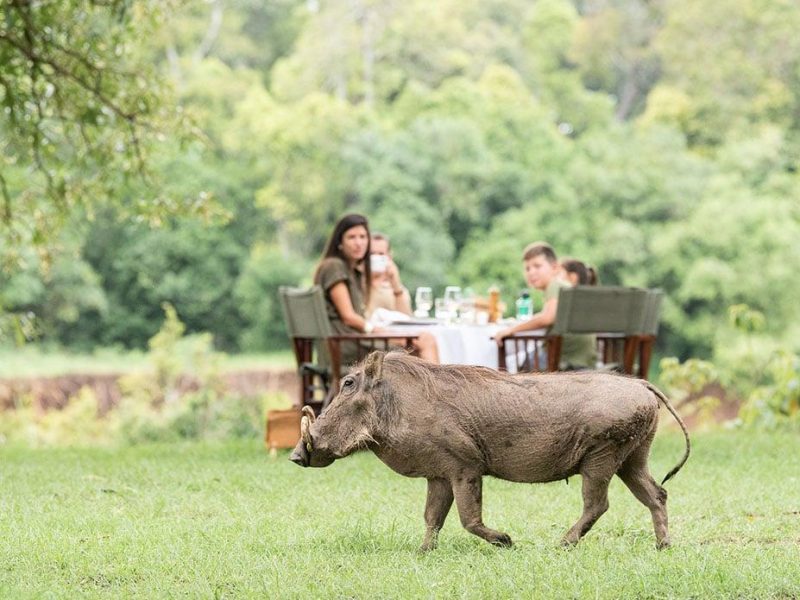3 Days Bwindi Gorilla Trekking Uganda (Gorilla Tracking) Safari
The 3 Days Bwindi Gorilla Trekking Uganda (Gorilla Tracking) Safari will take you to Bwindi Impenetrable National Park, the home of Mountain Gorilla Trekking in Uganda.
This impenetrable forest is home to more than half of the remaining Mountain Gorillas in the world today
Fact: these giants can only be found in Uganda, Rwanda, and the rest in Congo (DRC). Apart from the Gorilla trekking, Bwindi forest is also ideal for other activities, nature walks, bird watching for bird enthusiasts.
With over 350 species of birds available in the park, over 160 species of trees, over 120 mammals, 27 frogs, 10 primate species, 220 butterflies
This 3-day Gorilla Safari Package includes; Gorilla trekking in Bwindi Impenetrable National Park, other primates include; the black and white colobus, red-tailed monkeys, baboons, Blue Monkey, and others
Detailed 3 Days Bwindi Gorilla Trekking Uganda (Gorilla Tracking) Safari
After an early breakfast in your hotel, at around 7 am, your guide/driver, will come to pick you up at the hotel and straight hit the road for the long journey.
On the road you experience a lot, make use your guide by asking him anything about the safari or what you need explanations observed on the way to Bwindi.
You can also ask him about the gorilla tracking encounter just to prepare your mind before the experience.
On the way, we will have a stopover at the equator, stretch with an optional experimental movement of water (clockwise and anticlockwise) between the south and Northern Hemisphere. You can also have a moment to take as many photos as possible this point
We can also have coffee/tea cup and then proceed to Mbarara, nicknamed as “the land of milk”, evidenced by the presence of the long-horned cattle along the way.
This is where you will have a stopover for lunch. After lunch we shall embark on our journey, and the next stop should be at the lodge and check in at the lodge which probably has to be close or in the Bwindi Forest
Recommended Accommodation:
- Sanctuary Gorilla forest camp
- Buhoma lodge
- Clouds Mountain Gorilla Lodge
- Mahogany Springs
- Nkuringo Bwindi Gorilla Lodge
- Gorilla Safari Lodge
- Rushanga Gorilla Camp
- Gorilla Heights Lodge
This is the highlight of our trip Gorilla Trekking. After breakfast, we assemble at the briefing point of the park offices, before being guided in the forest by the park ranger guide.
You will also be escorted by the touring police to protect you against any threat be it from forest Elephants, buffalos and even wild Gorillas.
Trekking of the gorillas depends on how lucky you were on the family of the gorilla permitted. After spotting your gorilla family, then you will be given an hour to spend with the family up close. After this you will return back to your lodge for an overnight dinner
Recommended Accommodation:
- Sanctuary Gorilla forest camp
- Buhoma lodge
- Clouds Mountain Gorilla Lodge
- Mahogany Springs
- Nkuringo Bwindi Gorilla Lodge
- Gorilla Safari Lodge
- Rushanga Gorilla Camp
- Gorilla Heights Lodge
After the morning breakfast, you check out of the lodge leaving Bwindi forest and we embark on our route back to Kampala.
We get a hot lunch stop in Mbarara and then drive through Lake Mburo National Park. On a lucky day we can spot Zebras and Impalas, we can stop at Mpambire drum making village on Masaka road for souvenirs then continue
Just like Rwenzori Mountain Trekking, Gorilla trekking also requires these items when trekking the gorillas;
Water:
Gorilla trekking can be very tiresome and you need to refill your tank as the trek goes on. It is advisable to park a few water filtrations tablets before you come for the trek
Boots:
you will need good waterproof comfortable shoes. Some times it rains during the trek, so skid proof shoes can come in handy
Rain Jacket:
You are advised to carry rain jacket because if rains very often in Bwindi impenetrable forest
Snack:
You can carry a light snack to give you some energy during the walk in the forest
Trouser and shirts:
Bwindi forest is covered with thick undergrowth, therefore light trousers and long-sleeved shirts are advised
Socks:
You will have to tuck in the trousers into the socks to avoid insects crawling inside
Gloves:
You will need Garden gloves because you will be grabbing tree branches, leaves etc. and some can be thorny
Camera:
Carry a good camera (no flash) to capture this lifetime experience
Background Information of 3 Days Bwindi Gorilla Trekking Uganda (Gorilla Tracking) Safari
Bwindi is derived from the Runyakitara word “mubwindi” and means “a place full of darkness” this name comes from the extensive stands of bamboo interspersed amongst the larger forest hardwoods.
The bamboo and thick ground cover of ferns, vines, and other plants growth severely hinder direct access on foot.
The forest is on the edge of the western arm of the Great Rift Valley, only a few kilometers from the Democratic Republic of Congo (DRC) border and about 25 kilometers (16 mi) north of the Virunga Mountains
The forest is one of the most biologically diverse area on earth where half the world’s population of the highly endangered Mountain Gorillas live in its natural habitant jungle.
The forest has been recognized by the United Nations Educational, Scientific and Cultural Organization as a world heritage site for its biological significance
The forest has been described as “riven by disputes and crosshatched by historical, political, biological boarders” by the researcher Craig Stanford, co-director of the park’s jane Goodall Research center. In 1991, the Bwindi Impenetrable National Park was established
it is located southwestern Uganda. The park part of Bwindi Impenetrable Forest.
The Park is on the edge of the western arm of the Great Rift Valley, only a few kilometers from the Democratic Republic of Congo (DRC) border and about 25 kilometers (16 mi) north of the Virunga Mountains.
Composed of 321 square kilometers (124 sq mi) of both Montane and lowland forest, it is accessible only by foot.
BINP has been recognized by the United Nations Educational, Scientific and Cultural Organization as a world heritage site for its biological significance
Species diversity is a feature of the park. It provides habitat for 120 species of mammals, 348 species of birds, 220 species of butterflies, 27 species of frogs, chameleons, geckos, and many endangered species.
Floristically, the park is among the most diverse forest in East Africa, with more than 1000 flowering plant species, including 163 species of trees and 104 plant species of ferns.
The northern (low elevation) sector has many species of Guineo-congolian flora, including two endangered species, the brown mahogany and Brazzeia longipedicellata. In particular area shares in the high levels of Endemisms the Albertine Rift
The park is a sanctuary for colobus monkeys, chimpanzees, and many birds such as hornbill and turacos. It is most notable for the 400 Bwindi Gorillas, half of the world’s population of endangered mountain Gorillas.
Habituated mountain gorilla groups are open to tourism in four different sectors of Buhoma, Ruhijja, Rushaga and the Nkuringo in the Districts of Kanungu, Kabaale and Kisoro respectively all under the management of Uganda Wildlife Authority
NOTE:
Gorilla trekking best time to go in Uganda is usually in the dry seasons: December-January and June-August
The price for Gorilla trekking permit in Uganda is $700
Bwindi is a home to over 350 Gorillas, 350 bird species
Itinerary Gallery
Highlights
Travel from Kampala to Bwindi National Park
Gorilla trekking and other primate tracking including; black and white colobus monkeys, red tailed monkeys, baboons, blue monkeys etc. and an option of birding too
Transfer back to Kampala/Entebbe
Safari Inclusions and Exclusions
Safari includes:
- Transportation in a tour van/Land cruiser
- Service of an English -speaking tour guide/driver
- All activities mentioned in the itinerary
- Park admissions
- Accommodation on full board
- Entrance fees to all destinations as per the program
- Transfer to and from the airport
Safari exclusions
- All activities not mentioned in the program
- Phone calls bills
- Tips
- International transfers
- Gratitude to tour guides
- Personal insurance
- Personal effects of any nature
- Hotel fees before and after the safari








Reviews
There are no reviews yet.